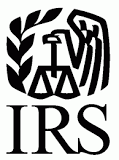The Consolidated Appropriations Act, 2021 (H.R. 133) (the “Act”) was passed by both houses of Congress on December 21, 2020, and signed into law by the President on December 27, 2020. The Act is an incredible 5,593 pages long and contains both an omnibus spending bill to fund the government through September 30, 2021 and a COVID-19 stimulus package that provides approximately $900 billion in emergency relief to individuals and businesses.
The Act contains numerous provisions that impact employee benefit plans. The principal takeaways from the Act that plan sponsors must consider are summarized below. In contrast to the length of the Act itself, this alert is intended to provide a high level summary. Please reach out to us if you have specific questions about the Act.
Health and Welfare Plan Related Provisions
This is the largest health care legislative package since the Affordable Care Act and the Act includes almost a dozen new patient protections with quickly approaching effective dates, which will result in significant new regulation being issued in 2021.
FSA Flexibility
The Act provides for significant additional flexibility for both health care flexible spending arrangements (“FSA”) and dependent care FSAs. These provisions are optional, not required, and employers will need to amend their plans to provide the new rights, if they choose to offer them.
Carryover. Any unused funds in FSAs from a plan year ending in 2020 or 2021 may be carried over and used at any time in the next plan year. These carryovers will be allowed under rules similar to the existing carryover rules for health FSAs (but without the dollar limit on carryovers).
Grace Periods. FSAs with grace periods may extend those grace periods to up 12 months for plan years ending in 2020 or 2021. Normally, grace periods have a maximum 2 ½-month period.
Post-Termination Reimbursement. If an employee terminates participation during calendar year 2020 or 2021, FSAs may also reimburse for otherwise eligible expenses incurred through the end of that year (plus any grace period).
Dependent Care Post-Age 13 Coverage. For dependent care FSAs, if a dependent became too old to have their care expenses reimbursed (age 13) due to the pandemic, any unused funds may be used for the remainder of the plan year in which they aged out. Further, if any funds remain unused at that time, those funds can be used until the child turns 14.
Prospective Changes Permitted. For plan years ending in 2021, employees may prospectively change their FSA contributions without incurring a permitted election change event.
“No Surprise” Medical Billing Provisions
Under a section titled the “No Surprises Act,” the Act includes several provisions to regulate surprise medical billing from certain non network providers, air ambulances and for emergency services. These provisions concern bills from out-of-network providers requiring more money from the patient after the health plan has paid its part. This can happen in an emergency setting or where a patient goes into an in-network hospital, but is treated there by an out-of-network provider.
Generally, the Act provides that individuals covered by a group health plan or individual/group health insurance receiving non-emergency services at a network facility cannot be balance billed by a non-network provider, unless the non-network provider provides notice to the individual and the individual consents. An exception exists for “ancillary services”, such as anesthesiology, pathology, and radiology, and the Act also fleshes out associated details, such as payment timelines and dispute resolution processes.
The agencies are required to begin finalizing implementing regulations regarding the methodology for making payments by July 1, 2021, with the rest to come by December 31, 2021. These provisions become effective January 1, 2022.
These rules replace the current Affordable Care Act rules governing the payment of emergency services and apply to both grandfathered and non-grandfathered plans.
Additional Health Plan Provisions
ID Card Information. ID cards for group health plans (physical or electronic) must include, in clear writing, the deductible, out-of-pocket limits, and consumer assistance information.
Continuity of Care. Patients undergoing treatment for a serious and complex condition, who are pregnant, receiving inpatient care, scheduled for non-elective surgery or terminally ill must be notified if their provider leaves the network and given the opportunity to continue care (at an in-network rate) for 90 days.
Cost Comparison Tools. Plans and carriers will be required to offer cost comparison tools (via phone or the internet) starting with plan years beginning on or after January 1, 2022.
Gag Clauses Prohibited. “Gag” clauses will be prohibited. These clauses prevent health plans from sharing provider-specific reimbursements and information. Prohibiting these clauses facilitates the creation of the cost-comparison tools.
Provider Directories. Group health plans must update provider directories at least every 90 days and establish a system to respond to inquiries about the network status of a provider within one business day.
Mental Health Parity. Plans will be required to analyze the nonquantitative treatment limitations that they apply to mental health and substance use disorder benefits to show that the limitations are comparable to those that are used for medical/surgical benefits.
Retirement Plan Related Provisions
Partial Plan Terminations. The Act provides for temporary relief from the 100% vesting requirement for partial plan terminations caused by employee turnover under Code section 411(d)(3) if the turnover is due to COVID-19. A qualified plan will not incur a partial termination during any plan year which includes the period beginning on March 13, 2020, and ending on March 31, 2021, if the number of active participants covered by the plan on March 31, 2021, is at least 80% of the number of active participants covered by the plan on March 13, 2020.
Coronavirus-Related Distributions. The Act extends the COVID-19 in-service distribution relief under the CARES Act to money purchase pension plans.
Disaster Relief (Not Including COVID). The Act provides special disaster related distribution and loan rules (similar to prior natural disaster relief, including a distribution right, increase in loan limits, loan suspensions, etc.) for FEMA declared disasters (other than COVID-19) from January 1, 2020 through 60 days after enactment of the Act.
Consolidated Appropriations Act, 2021

